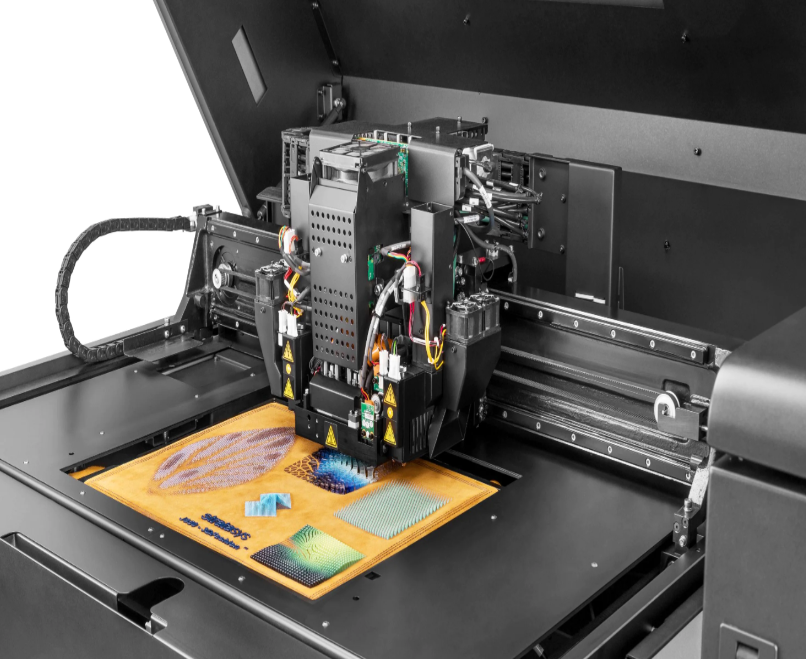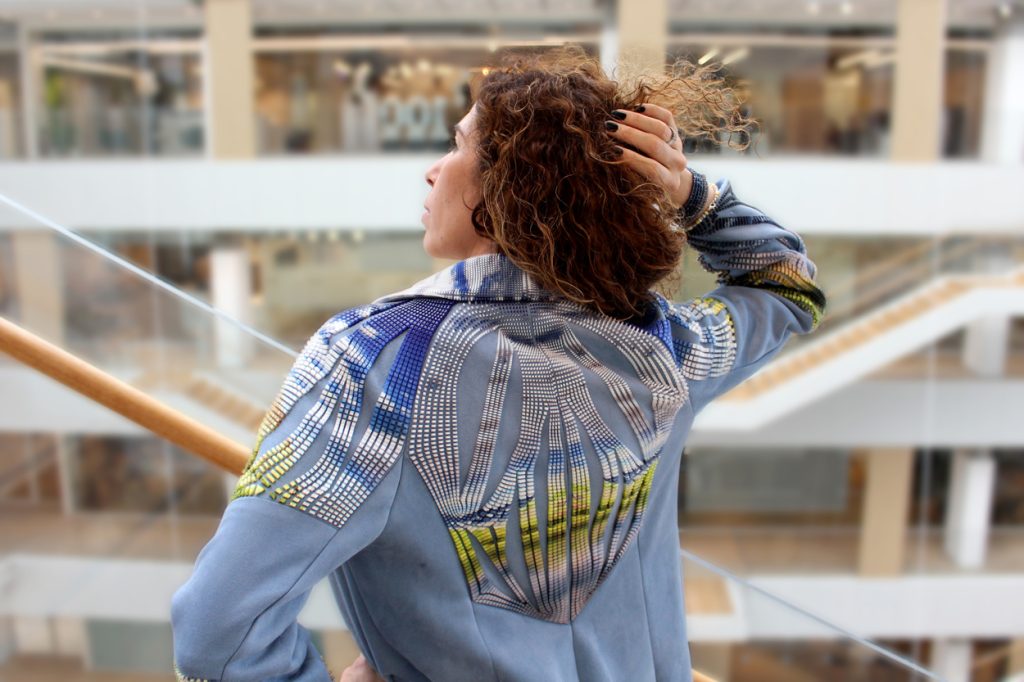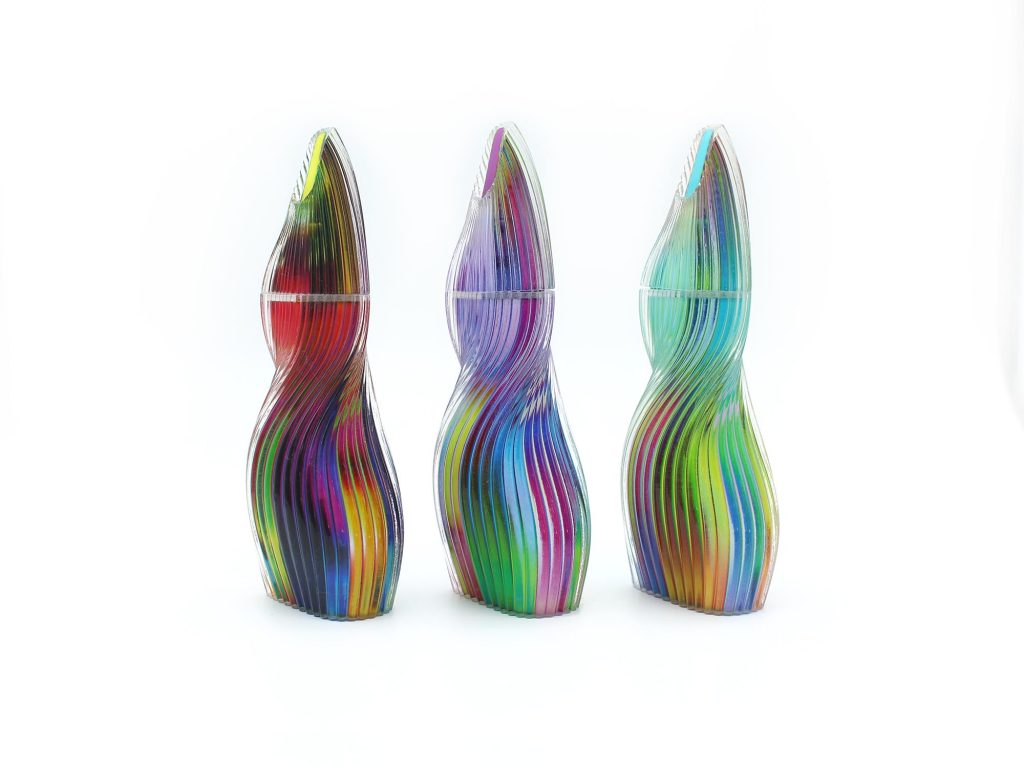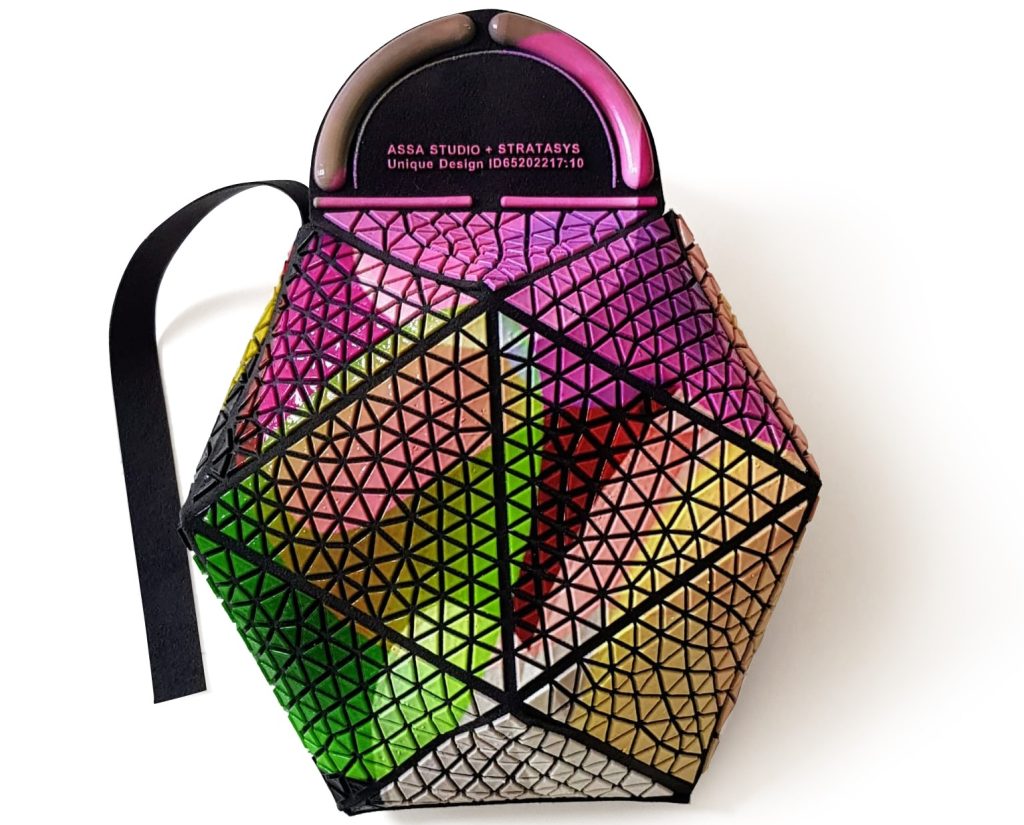3D printer OEM Stratasys has debuted its 3D printed SSYS 2Y22 Reflection Collection at Milan Design Week, which runs from June 6th – 12th.
Manufactured and curated by Stratasys itself, the collection comprises the work of seven different design groups, including custom dresses and suits, daywear, cosmetics, luxury packaging, lighting, accessories, footwear, and more.
Each of the pieces was developed on the firm’s new J850 TechStyle system, a full-color PolyJet printer designed specifically for printing directly onto textile materials. The machine operates on one of Stratasys’ latest innovations, 3DFasion technology, and is aimed squarely at fashion designers and garment manufacturers.
“Reflection brings to life the impact of the global changes of the last two years through innovative fashion and design pieces,” said Naomi Kaempfer, Art, Design and Fashion Director for Stratasys. “The collection focuses on three main pillars – personal space, social inclusion and mindful manufacturing.”

The seven design groups of the SSYS 2Y22 Collection
Karim Rashid boasts more than 4000 designs in production, holds over 400 awards, and operates in more than 35 countries. His signature style is one of art graphics and geometry, as reflected by his design pieces. To contribute to the SSYS 2Y22 Collection, he digitally transformed his 2D designs into 3D, resulting in a variety of luxury handbags and dresses.
Jasna Rok Lab is an award-winning studio that focuses its work on the physiology of feelings. Working in collaboration with 3D Designer Travis Fitch, Jasna leveraged Rhino and CLO3D software to generate 3D algorithmic structures for the Stratasys Collection. Referred to as the Trypophilia Collection, the recent designs aim to visualize the physical locations of emotions such as sadness, happiness, and fear.
Ganit Goldstein is a smart textile researcher specializing in 3D printed fashion development. Her jacket designs were inspired by the natural textures found across the four seasons, simulating how light interacts with everything from autumn leaves to spring flowers.

FORÆVA is a diverse design lab led by fashion designer Lana Dumitru and architect Vlad Tenu. The lab’s work focuses on classic ethnic Romanian designs adapted to modern-day living, but reveals hidden 3D printed meanings when viewed in close proximity.
Assa Studio has been investigating the creative aspects of 3D printing for over ten years. Assa’s contribution to the collection includes a novel light fixture design and an origami-inspired clutch bag, which was printed on Dinamicamiko plant-based leather.
KAIMIN, a gender fluid fashion label based in New York, has previously worked with big names such as Bjork, Lady Gaga, and Beyonce. Intended to reflect inclusivity, the label has now designed three new 3D printed pieces in collaboration with Travis Fitch: a bodysuit, dress, and jacket. Each design draws inspiration from New York’s parametric urban architecture.
Illusory Material is a California-based design studio with a specialism in optics and software. Co-founders Jiani Zeng and Honghao Deng are known for their research into the lenticular effect, which is featured in the duo’s 3D printed refillable perfume bottle design.

The road ahead for 3D printed fashion
Stratasys sees a bright future for its 3D printing technology in the fashion world, having already partnered with several organizations such as fashion tech firm Dyloan and its urban laboratory venture D-House.
Design pieces from the Reflection Collection, as well as 3DFashion technology, will be showcased at the D-house over the course of Milan Fashion Week. D-house will also continue to help Stratasys develop new applications for its 3D printer from concept to production.
Shamir Shoham, VP of Design for Stratasys, said, “Our partnerships with designers and fashion houses have allowed us to bring to the world an innovative collection created using 3D printing technology. We believe that 3D printing is the future of innovation in fashion and design and that it will open up unlimited possibilities for fashion designers and manufacturers to personalize and customize 3D printed fabric pieces.”

Earlier this year, the Met Gala’s red carpet featured four gowns designed by fashion designer Iris van Herpen, each of which was fabricated with the help of 3D printing. The designs were worn by singer and actress Dove Cameron, singer-songwriter Teyana Taylor, model and activist Winnie Harlow, and Sweden’s ‘most stylish persona’ Fredrik Robertsson.
Elsewhere, at this year’s Paris Fashion Week, additive manufacturing made a return to the catwalk in the form of a 3D printed ROCIO handbag. The handbag was created off the back of a research and development project between ROCIO, a Scottish luxury eco-fashion brand, and the National Manufacturing Institute Scotland (NMIS), to explore more sustainable manufacturing techniques for the brand’s handbags.
Subscribe to the 3D Printing Industry newsletter for the latest news in additive manufacturing. You can also stay connected by following us on Twitter, liking us on Facebook, and tuning into the 3D Printing Industry YouTube Channel.
Looking for a career in additive manufacturing? Visit 3D Printing Jobs for a selection of roles in the industry.
Featured image shows Ganit Goldstein’s GnoMon jacket. Photo via Yaron Atiya.


